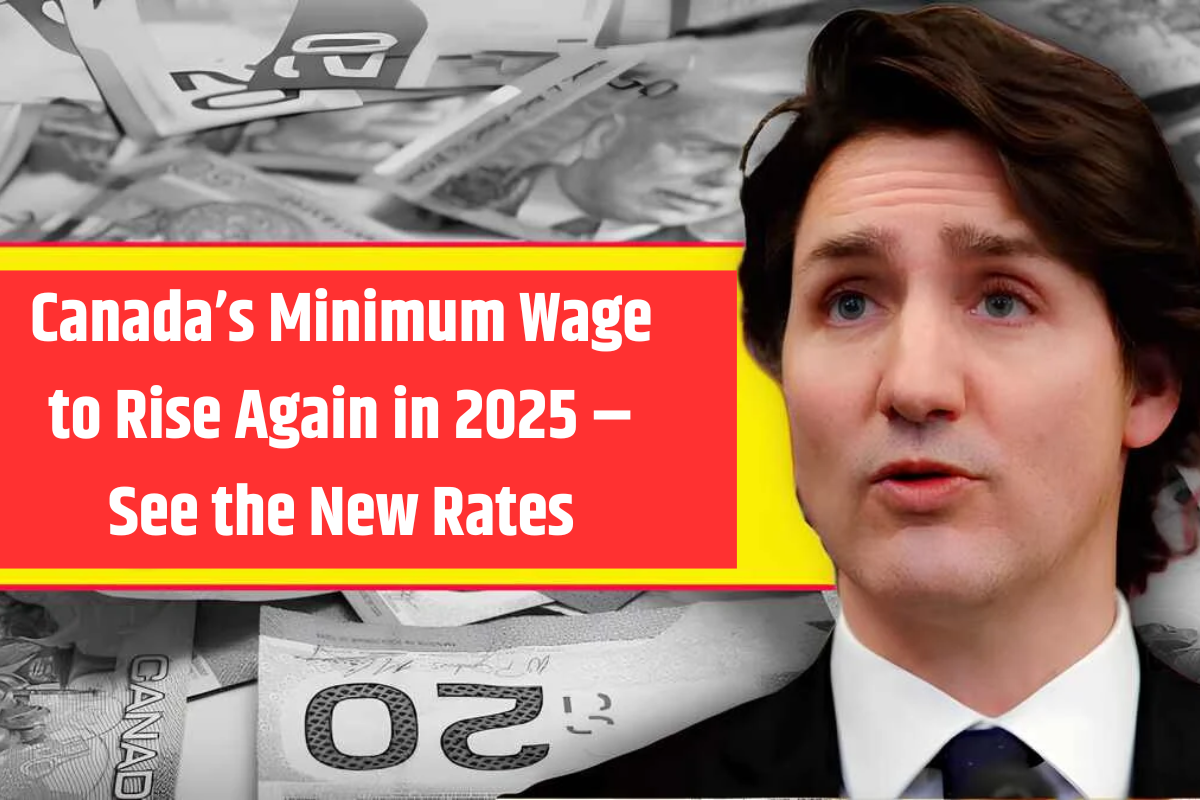The Canada Minimum Wage Increase in 2025 is set to improve earnings for workers across the country, reinforcing the government’s commitment to fair wages and economic stability. With inflation and the rising cost of living, these adjustments aim to provide employees with better financial security while ensuring businesses remain competitive and sustainable. Here’s everything you need to know about the upcoming changes, province-specific details, and practical advice for workers and employers.
Canada’s Minimum Wage Increase in 2025
Canada’s minimum wage increase in 2025 is a significant move toward ensuring workers earn a livable wage that keeps up with inflation. These increases empower workers by boosting their purchasing power and improving overall job satisfaction. Employers, on the other hand, must prepare for higher labor costs and adjust their financial strategies accordingly. Understanding these adjustments will help both workers and businesses navigate the transition effectively.
New Minimum Wage Rates by Province/Territory
| Province/Territory | Current Minimum Wage | Effective Date | New Minimum Wage | Percentage Increase |
|---|---|---|---|---|
| Yukon | $17.59 | April 1, 2025 | TBD | TBD |
| Newfoundland and Labrador | $15.60 | April 1, 2025 | TBD | TBD |
| Nova Scotia | $15.20 | April 1, 2025 | TBD | TBD |
| New Brunswick | $15.30 | April 1, 2025 | TBD | TBD |
| Prince Edward Island | $16.00 | April 1, 2025 | TBD | TBD |
| British Columbia | $17.40 | June 1, 2025 | TBD | TBD |
| Ontario | $17.20 | October 1, 2025 | TBD | TBD |
| Manitoba | $15.80 | October 1, 2025 | TBD | TBD |
| Saskatchewan | $15.00 | October 1, 2025 | TBD | TBD |
Note: The final wage increases will be confirmed closer to the effective dates. Stay updated through the Government of Canada’s Minimum Wage Database.
Why Minimum Wage Increases Matter
Minimum wage increases play a crucial role in economic stability and worker welfare. Key benefits include:
- Combating Inflation: As the cost of living rises, wage hikes ensure that workers can afford essential goods and services.
- Reducing Income Inequality: Fair wages create economic balance and help bridge the gap between low-income and higher-income groups.
- Boosting Employee Retention: Better wages reduce turnover rates, improving workplace morale and productivity.
Breakdown of Wage Increases by Province
Yukon
- Current Minimum Wage: $17.59/hour
- Next Adjustment: April 1, 2025
- Details: Adjustments are based on the Consumer Price Index (CPI) to match living costs.
Newfoundland and Labrador
- Current Minimum Wage: $15.60/hour
- Next Adjustment: April 1, 2025
- Details: Wage increases are aligned with inflation trends.
Nova Scotia
- Current Minimum Wage: $15.20/hour
- Next Adjustment: April 1, 2025
- Details: Changes are informed by labor group consultations and economic analysis.
New Brunswick
- Current Minimum Wage: $15.30/hour
- Next Adjustment: April 1, 2025
- Details: Aims to align wages with the regional cost of living.
Prince Edward Island
- Current Minimum Wage: $16.00/hour
- Next Adjustment: April 1, 2025
- Details: The government conducts ongoing wage reviews to ensure fair pay.
British Columbia
- Current Minimum Wage: $17.40/hour
- Next Adjustment: June 1, 2025
- Details: Reflects BC’s high cost of living.
Ontario
- Current Minimum Wage: $17.20/hour
- Next Adjustment: October 1, 2025
- Details: Regular increases ensure fair compensation.
Manitoba
- Current Minimum Wage: $15.80/hour
- Next Adjustment: October 1, 2025
- Details: Increases are determined in consultation with labor organizations.
Saskatchewan
- Current Minimum Wage: $15.00/hour
- Next Adjustment: October 1, 2025
- Details: Planned incremental increases to balance worker and business needs.
How Minimum Wage Increases Impact Workers and Employers
For Workers
- Higher Earnings: More income to cover essentials like rent, groceries, and utilities.
- Job Security: Fair wages reduce the likelihood of financial stress and job dissatisfaction.
- Better Quality of Life: Improved financial stability allows workers to save or invest.
For Employers
- Increased Labor Costs: Businesses must prepare for higher wage expenses.
- Employee Retention: Competitive pay attracts and keeps skilled workers.
- Pricing Adjustments: Companies may need to revise pricing models to offset wage hikes.
Interesting Insight: How Wage Increases Shape Local Economies
Higher wages don’t just benefit workers—they stimulate local economies. When employees earn more, they spend more on goods and services, boosting business revenue and encouraging economic growth. This cycle benefits communities and helps create a more robust financial system.
Frequently Asked Questions (FAQs)
Q1: How often does Canada adjust minimum wages?
Most provinces review wages annually, often based on the Consumer Price Index (CPI) and economic conditions.
Q2: Do all employees qualify for minimum wage increases?
While most workers are covered, some employees (e.g., students or liquor servers) may have different wage rates depending on provincial regulations.
Q3: How can workers ensure their wages are updated?
Employees should monitor provincial announcements and check their pay stubs to verify compliance. Report any discrepancies to labor authorities.
Q4: Can employers delay implementing the new minimum wage?
No. Employers must comply with the updated wage rates on or before the effective date to avoid legal penalties.
Q5: Are minimum wage increases taxable?
Yes, all earnings are subject to federal and provincial taxes, though tax brackets vary by income level.
Final Thoughts
The 2025 Canada Minimum Wage Increase is a pivotal change that will impact both employees and businesses. While it ensures fair wages for workers, it also requires employers to make strategic financial adjustments. By staying informed and prepared, both parties can benefit from this economic shift and make the most of the opportunities it presents .
